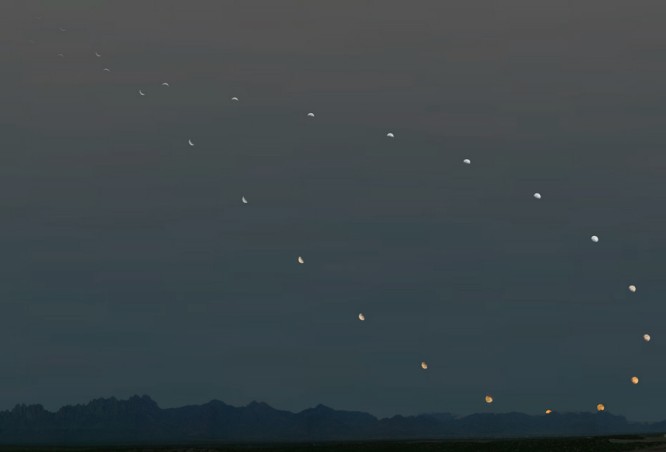
|
Credit: Rich
Richins
Explanation:
An analemma
is that figure-8 curve you get when you mark
the position of the Sun at the same
time each day for one year.
But the trick to imaging
an analemma of the Moon is to understand
that on average the
Moon
returns to the same position in the sky
about 51 minutes later each day.
So, if you
photograph
the Moon 51 minutes later on successive days, over
one lunation or
lunar month it will trace out an
analemma-like curve as the actual position of the Moon
wanders compared to the average --
due to the Moon's tilted and elliptical orbit.
For this excellent demonstration of the lunar analemma, astronomer
Rich Richins chose the lunar month containing this year's
northern hemisphere
summer
solstice.
The southernmost
Full Moon rises at the lower right
above the Organ Mountains in southern New Mexico, USA,
with the New Moon phase at the upper left.
The multiple exposure image required some digital
manipulation, particularly to include thin crescent phases in
daytime
skies.
|
January February March April May June July August September October November December |
| ||||||||||||||||||||||||||||||||||||||||||||||||
NASA Web Site Statements, Warnings, and Disclaimers
NASA Official: Jay Norris. Specific rights apply.
A service of: LHEA at NASA / GSFC
& Michigan Tech. U.
Based on Astronomy Picture
Of the Day
Publications with keywords: analemma - Moon - lunation - phase - full moon - new moon
Publications with words: analemma - Moon - lunation - phase - full moon - new moon
See also:
